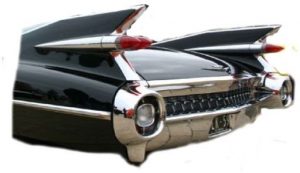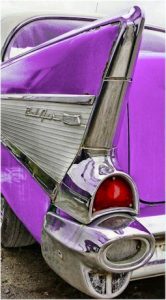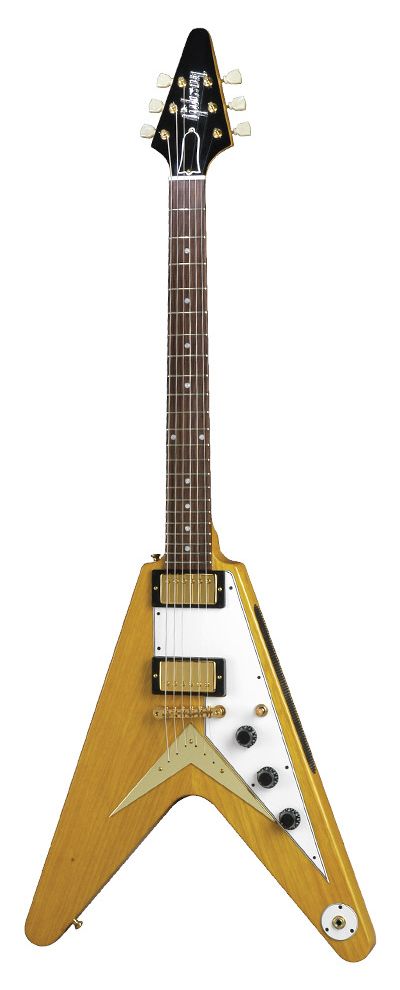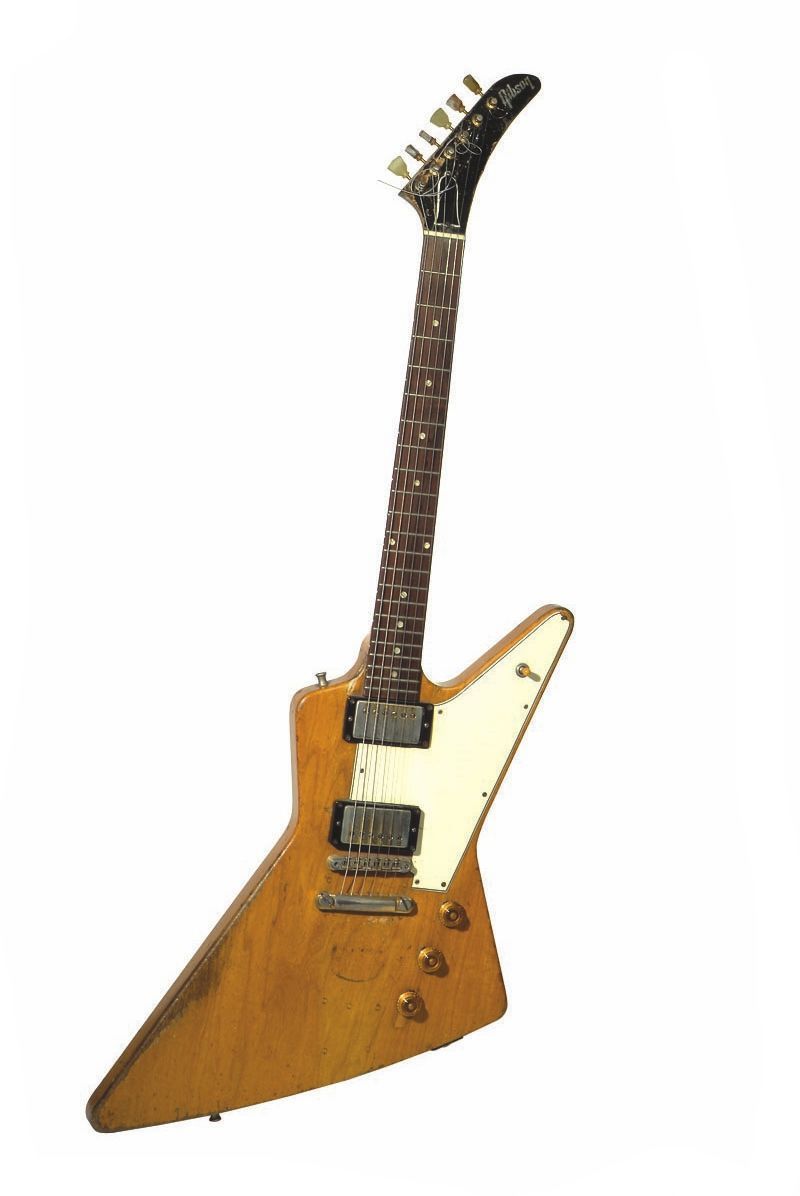Radical Guitars: forged in the Space age
The famous and not so famous radical Guitars. Designs forged in The Space Age.
How the Space age influenced the guitars of today. Here we present the beginnings of radical guitars designs that started in the 1950s.
Let’s face the truth. Gibson Les Pauls and Fender Stratocasters rule the world. Both came out in the early ’50s after the war and just as the world was entering the space age and the arms race. Cars started to resemble starships and so did guitars. Gibson eventually hired an automotive designer to spice their line.
In 1954 Fender released the Stratocaster with its sleek space-age looks. After a couple of years, Gibson started to feel the heat. Their numbers were down, so in 1957 they decided to fight back with some rather radical designs.

The Gibsons
In June 1957 three rather radicals offbeat designs were filed with the US patent office by Ted McCarty, the president of Gibson. They were the “Flying V”, the “Explorer ( called the Futura at the time)” and what is now known as the “Moderne”.
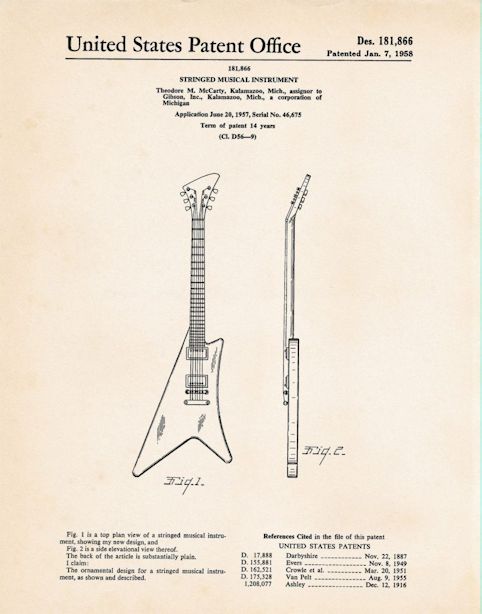
Notice that the patent shows the Gumby head.
The plan was to show all 3 at the 1957 NAMM show in Chicago. Everyone seems to agree that the “Flying V” and the “Futura/Explorer” were there. Here’s where the mystery begins. Some people actually say that they saw the “Moderne ” at the show. Ted McCarty claimed some, maybe as many as 6 were actually produced. Other Gibson employees say yes but they were all scrapped. Other Gibson employees say none were ever built. Rendall Wall, a Gibson engineer, claimed he borrowed one in 1960 to play a gig and brought it back never and seen again. There are other wild rumours that 40 to 50 left the production line. Billy Gibbons of ZZ Top claims he has an original. Others have made claims but none have substantiated in over 60 years.
Records indicate that productions were less than 50 “Explorer/Futura” in 1958. Supposedly Gibson shipped 19 in 1958 and only 3 in 1959. The ones sold in 1963 came from parts made in 1958 and 1959.
Another report that Gibson built 81 “Flying V’s” in 1958, and another 17 in 1959. I knew a player that had what we believe was an original V. I met him in 1970. It was not the type of guitar that you would sit on your lap. Gibson even put a strip of ribbed rubber on the side to keep it from sliding off your leg. It didn’t really work. His had a black pickguard. Judging by the shape of the pickguard it seems that it was an original. It sounded great through a 100 Watt Marshall stack.
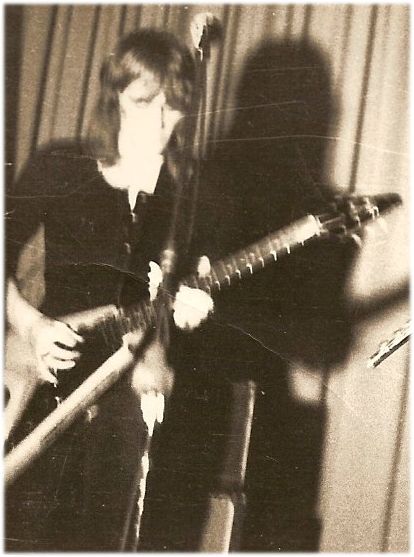
Since then Gibson and Epiphone have reissued all three models. The Flying V was the most popular. It was first reissued in 67 thru 69. The Explorer in 1976 and again in 1979. Gibson reissued the Moderne in 1982.
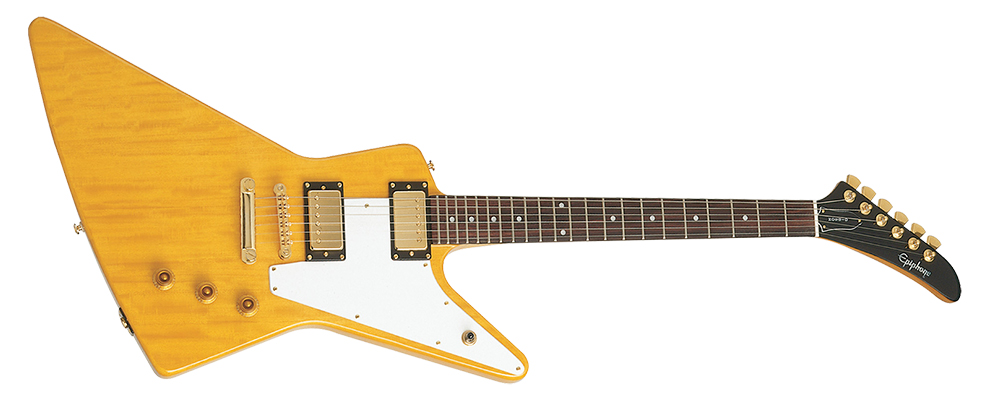
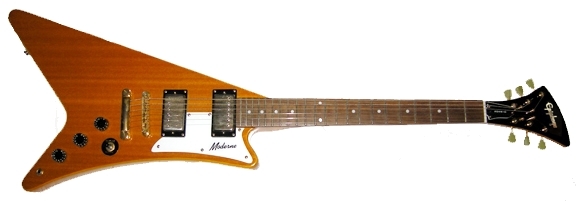
Any other series worthy of mention is the Firebird and the matching Thunderbird bass.
These appeared in 1963. There have always been lots of confusion with the model numbers. If you factor in The Thunderbird bass models it makes a bit more sense.
The line started with the Firebird I. It was a single pick-up version that became very popular, post mortem in 1968 when Eric Clapton used one on a Cream tour. Joe Bonamassa, a big Cream fan uses one and Gibson has issued a signature model.
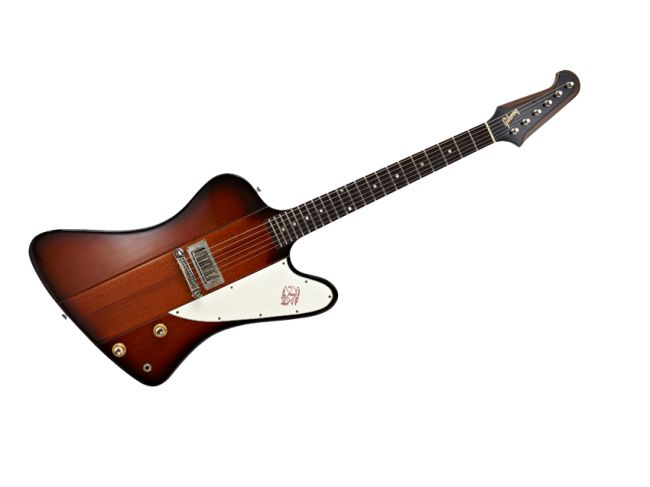
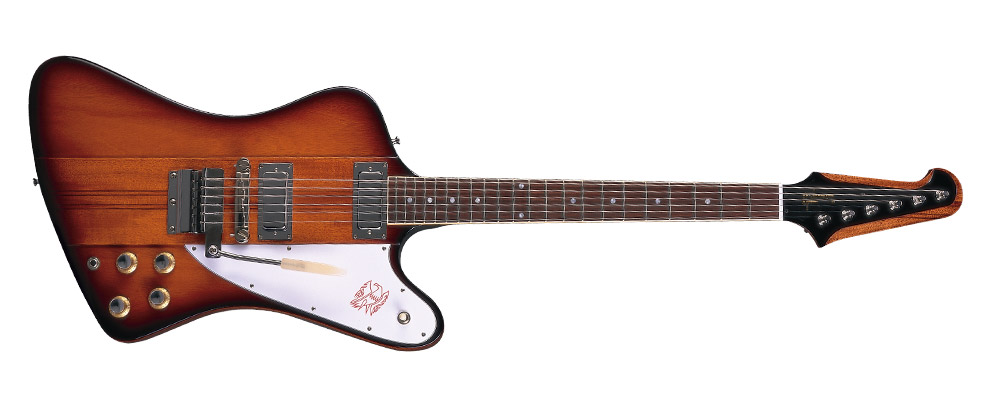
Then came the III, not the II but there is a Thunderbird II bass. The III features two pick-ups and a Gibson Vibrola. Both the I and the III have dot inlays.
After that is the V. Here again there was a Thunderbird IV bass. The V features two pick-ups but has the deluxe Vibrola. The deluxe Vibrato is also known as the Maestro vibrato. The same as the SG of this period. The inlay was a trapezoid shape starting above the third fret.
The top model was VII. What? no VI? It had three pick-ups the Deluxe Vibrola and like most of the Gibson series, it had rectangular inlays starting above the first fret.
The heads are very Fender like but the tuning pegs are perpendicular as opposed to the 45 angles on Fenders. Another queer item is that the pick-ups have no exposed screws.
In 1965 Gibson radically changed the looks by reversing the body. Strangely enough, these models are referred to as the non-reverse Firebirds.
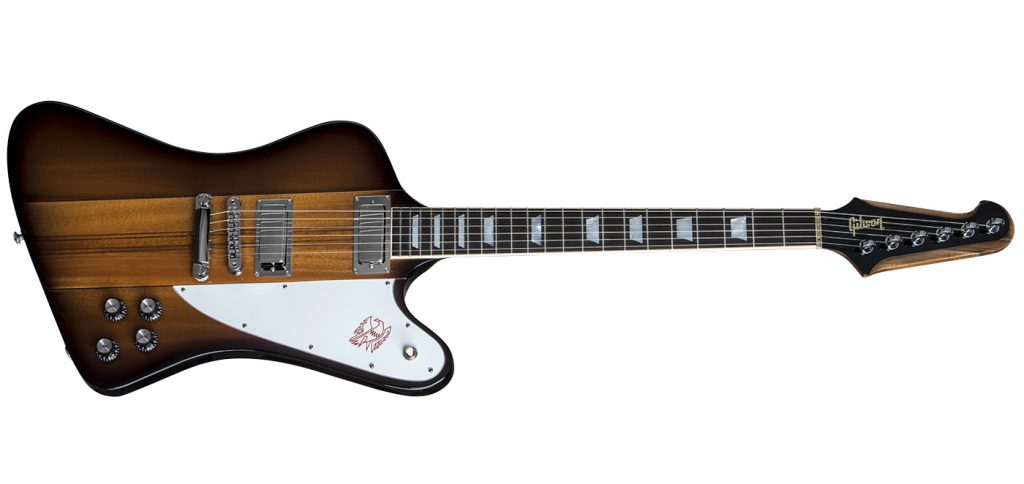
The Firebird I now had two black plastic p-90 type pick-ups. The III had three black plastic p-90 type pick-ups and the simple Vibrola. The V had two of the old-style screwless pick-ups and the deluxe Vibrola. The VII has three screwless pick-ups and the deluxe Maestro Vibrola.
All these models had only the dot inlays. The VII had gold-plated hardware like other Gibson top of the line models.
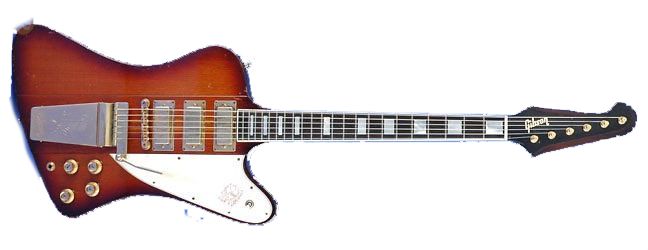
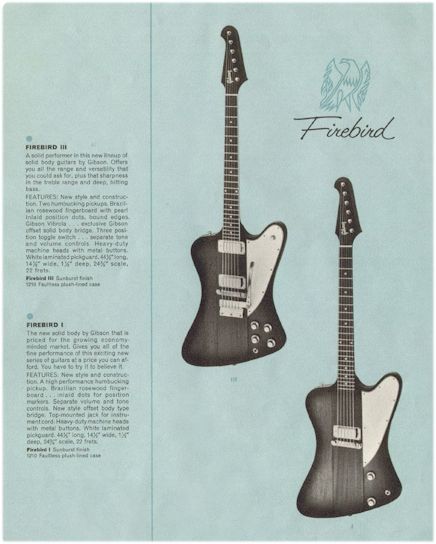
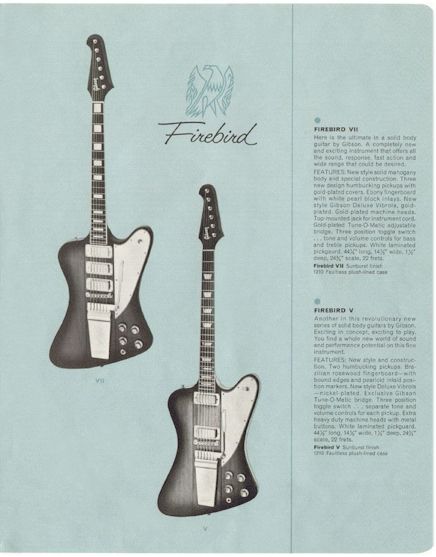
By 65 Gibson did a radical redesign. Here are pages from the 1966 catalogue.
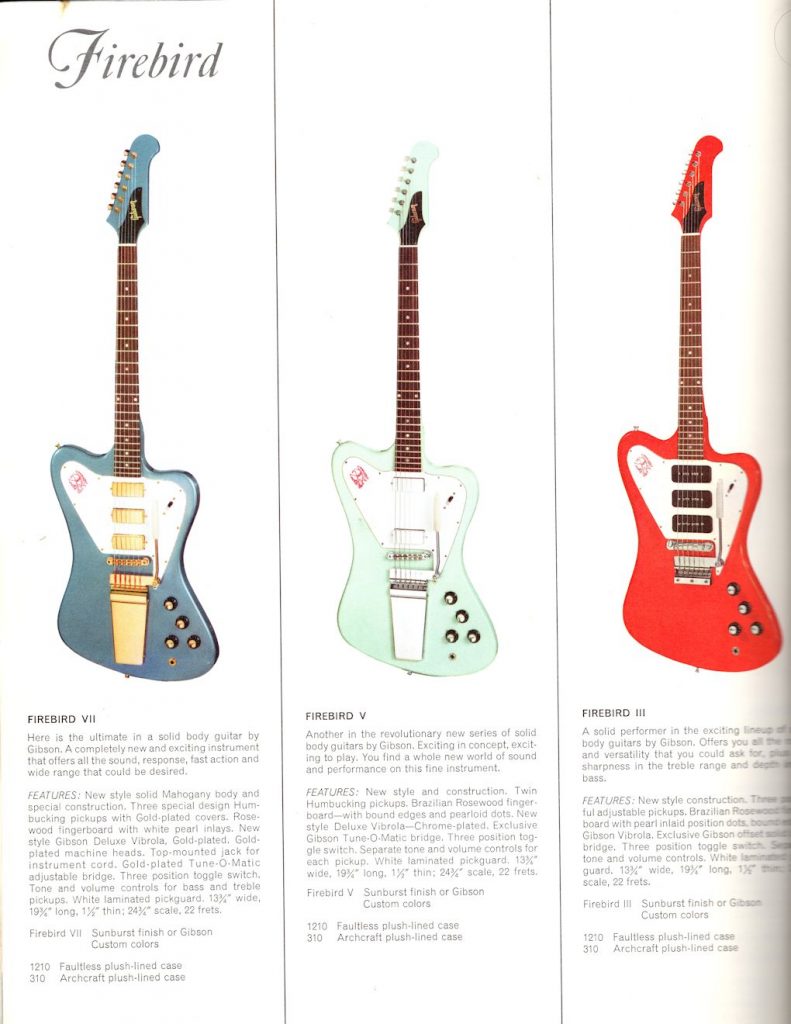
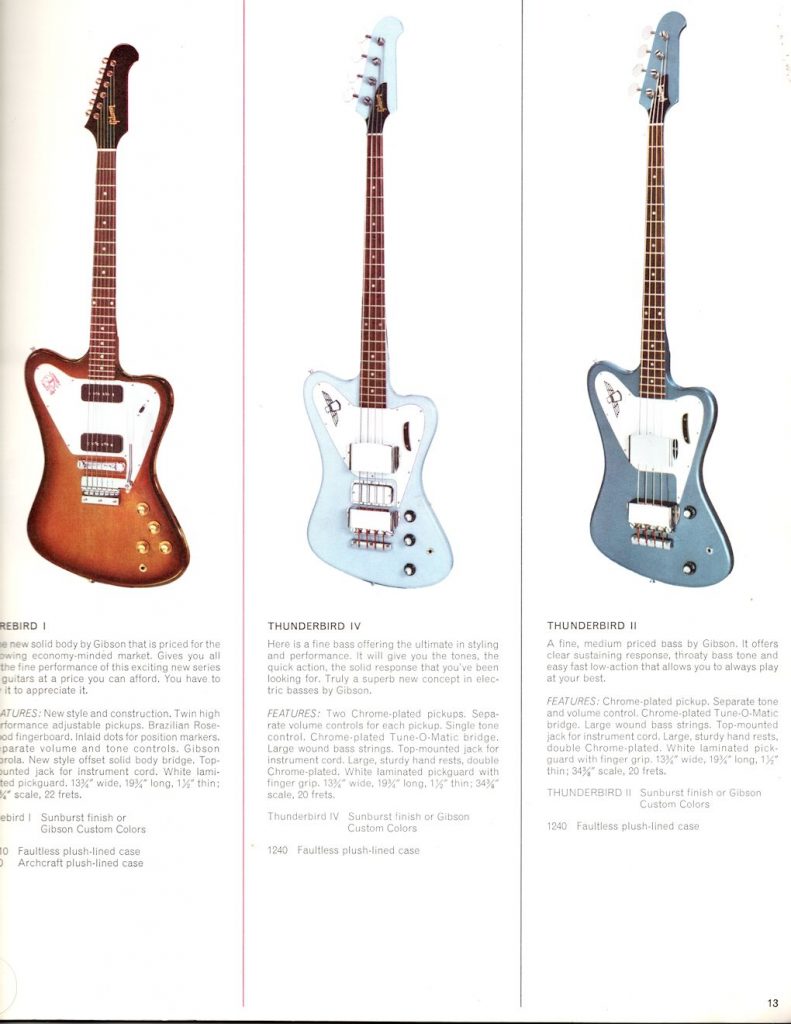
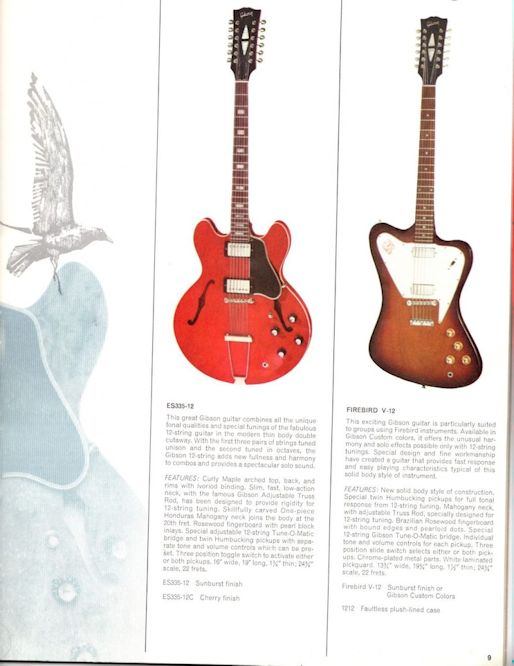
They also had a 12 string Firebird.


